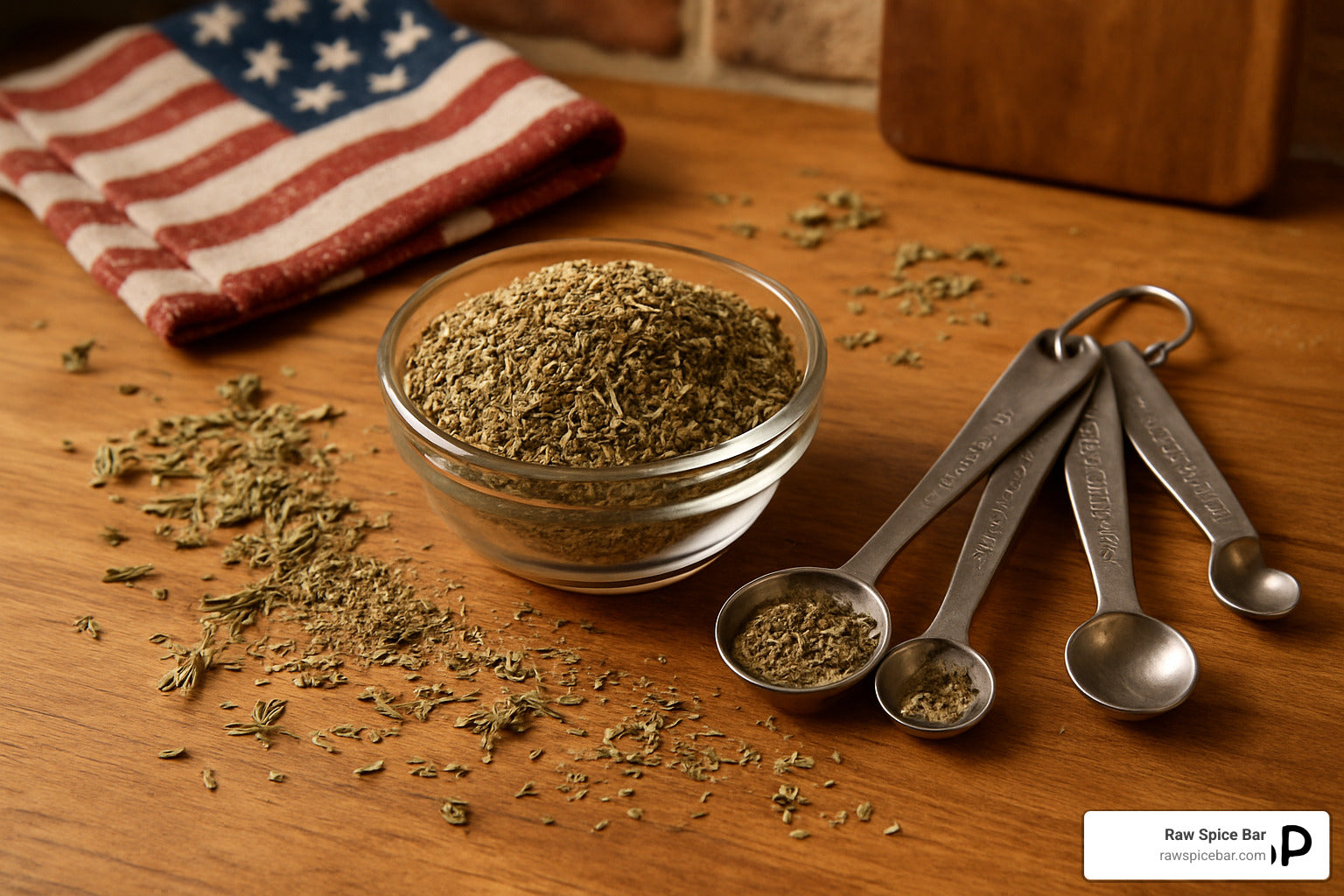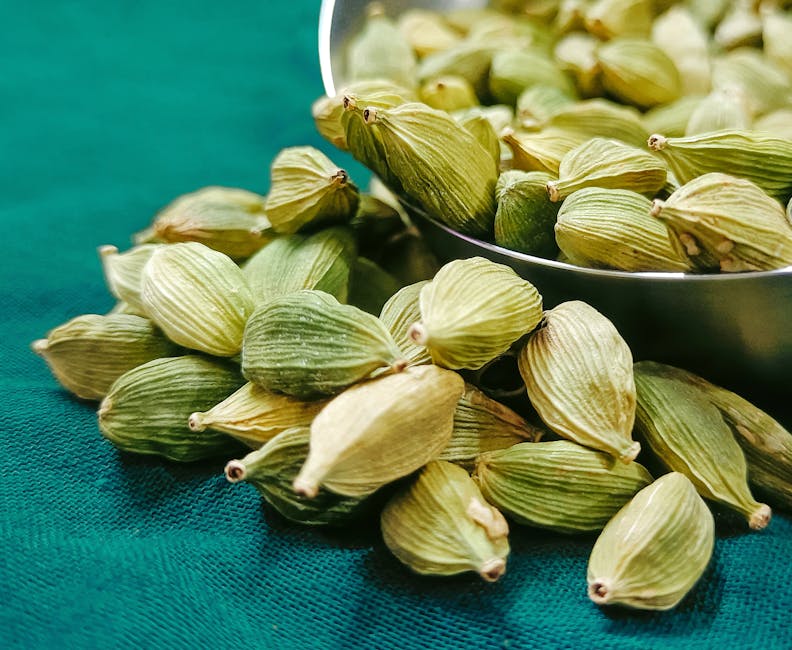When Your Spice Rack Lets You Down
Alternative for chili powder options are easier to find than you think. Here are the top quick fixes using common pantry spices:
Quick Pantry Substitutes: - 2 tsp paprika + 1 tsp cumin + ¼ tsp cayenne = 1 tbsp chili powder - Sweet paprika alone for mild, family-friendly dishes - Taco seasoning (1:1 ratio, reduce added salt by half) - Ancho or chipotle powder (use only ½ tsp per 1 tbsp needed)
We've all been there - you're halfway through making chili or tacos when you find your chili powder jar is completely empty. As one home cook put it: "Who is going to watch the kids if you dash out for spices?"
The good news? Most chili powder blends are just paprika, cumin, and a few other spices you probably already have. Commercial chili powder typically measures 1,000-1,500 Scoville Heat Units, making it much milder than you'd expect.
The key difference: Chili powder (with an "i") is a spice blend, while chile powder is pure ground peppers. This matters because you can easily recreate that complex flavor using simple pantry staples.
I'm Joseph Rosenblatt, founder of a premium spice company where I've spent years perfecting spice blends and helping customers find the best alternative for chili powder when they're stuck mid-recipe. My experience sourcing and blending spices globally has taught me that the best substitutes often come from understanding what makes chili powder work in the first place.
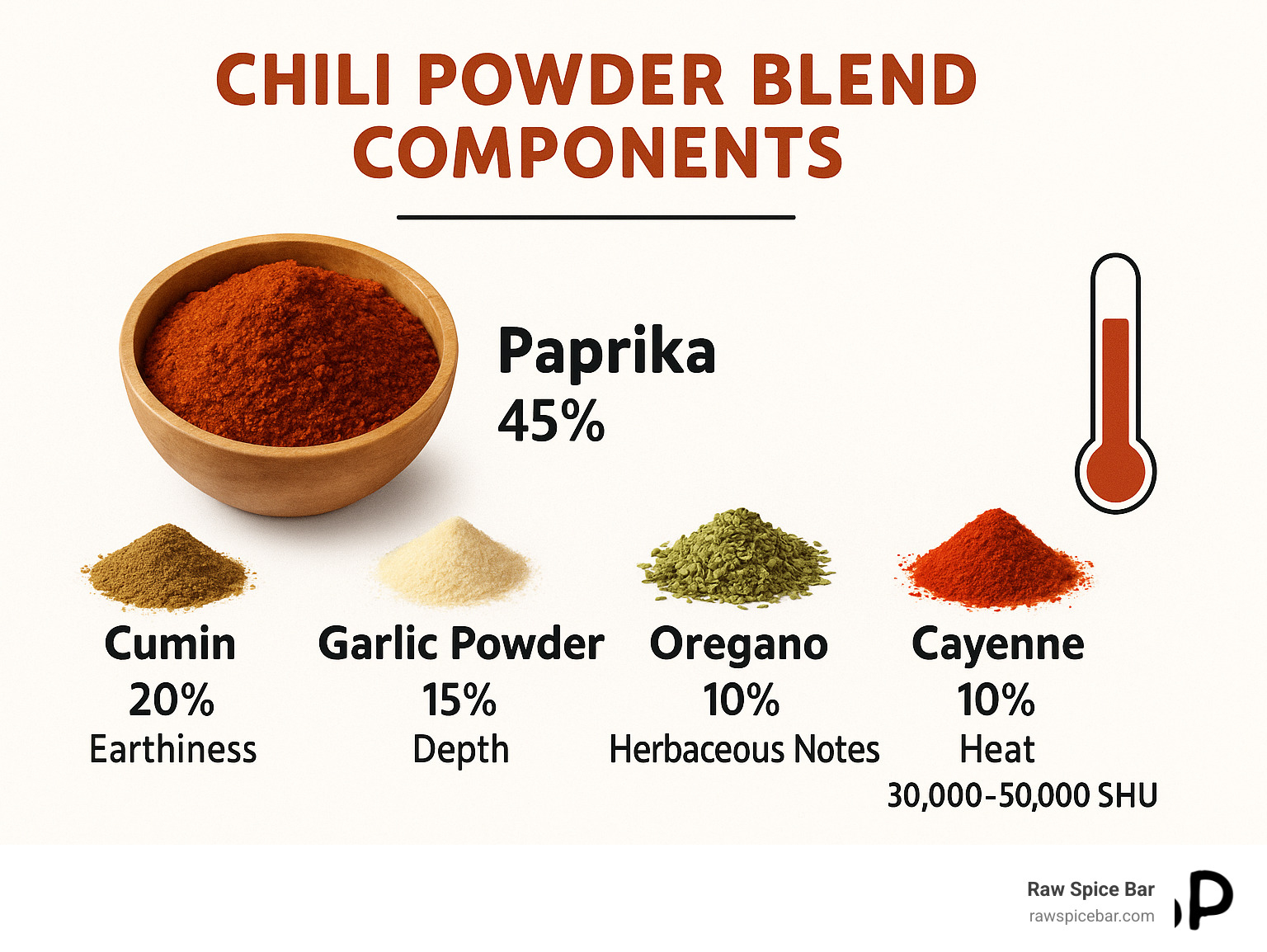
Chili Powder 101: Blend vs. Pure Chile
Here's what might surprise you: that jar of chili powder in your cabinet isn't actually made from chili peppers. It's a carefully crafted blend where paprika takes center stage, making up nearly half the mixture and giving you that familiar red color and gentle pepper flavor.
Think of chili powder as a spice orchestra. Paprika plays the lead violin, while cumin adds the deep bass notes with its earthy warmth. Garlic and onion powders provide the harmony, oregano brings in those fresh herbaceous high notes, and cayenne pepper? That's just a tiny whisper of heat in the background.
Most store-bought versions also include silicon dioxide - basically edible sand that keeps everything from clumping together. It's why your homemade alternative for chili powder might stick together more than the commercial stuff, but trust me, the flavor payoff is worth it.
The heat level sits comfortably between 1,000-1,500 Scoville Heat Units. To put that in perspective, cayenne pepper alone can hit 30,000-50,000 SHU. That means cayenne is up to 20 times hotter than your typical chili powder blend! Latest research on heat levels shows this gentle heat range is exactly why chili powder works so well in family cooking.
Why Chili Powder Exists
Picture this: it's 1890s Texas, and you're making chili for a crowd. The traditional way meant toasting different chile peppers, grinding them by hand, then carefully balancing each spice for every single pot. Tex-Mex cooks got smart and thought, "Why not mix this all up ahead of time?"
That's how chili powder was born - pure convenience. Instead of spending an hour prepping spices, you could shake one blend and get complex, layered flavor instantly. It's the same reason we still reach for it today when we're juggling dinner prep with everything else life throws at us.
Pure Chile Powders Explained
Single chile powders are the intense cousins of chili powder blends. Each one has its own personality and packs way more punch than the mild blend you're used to.
Ancho powder tastes like dried fruit with a gentle warmth - imagine raisins with just a hint of heat. Chipotle powder brings serious smokiness from being fire-dried, like a campfire in a jar. New Mexico chile offers that classic earthy pepper flavor with comfortable heat (500-1,250 SHU), while cayenne is all business - pure, fiery heat with no frills.
Here's the important part: these pure chile powders are significantly stronger than chili powder blends. When you're using them as an alternative for chili powder, start with just ½ teaspoon per tablespoon the recipe calls for. You can always add more, but you can't take it back once your chili is blazing hot!
Best Alternative for Chili Powder – Quick Pantry Fixes
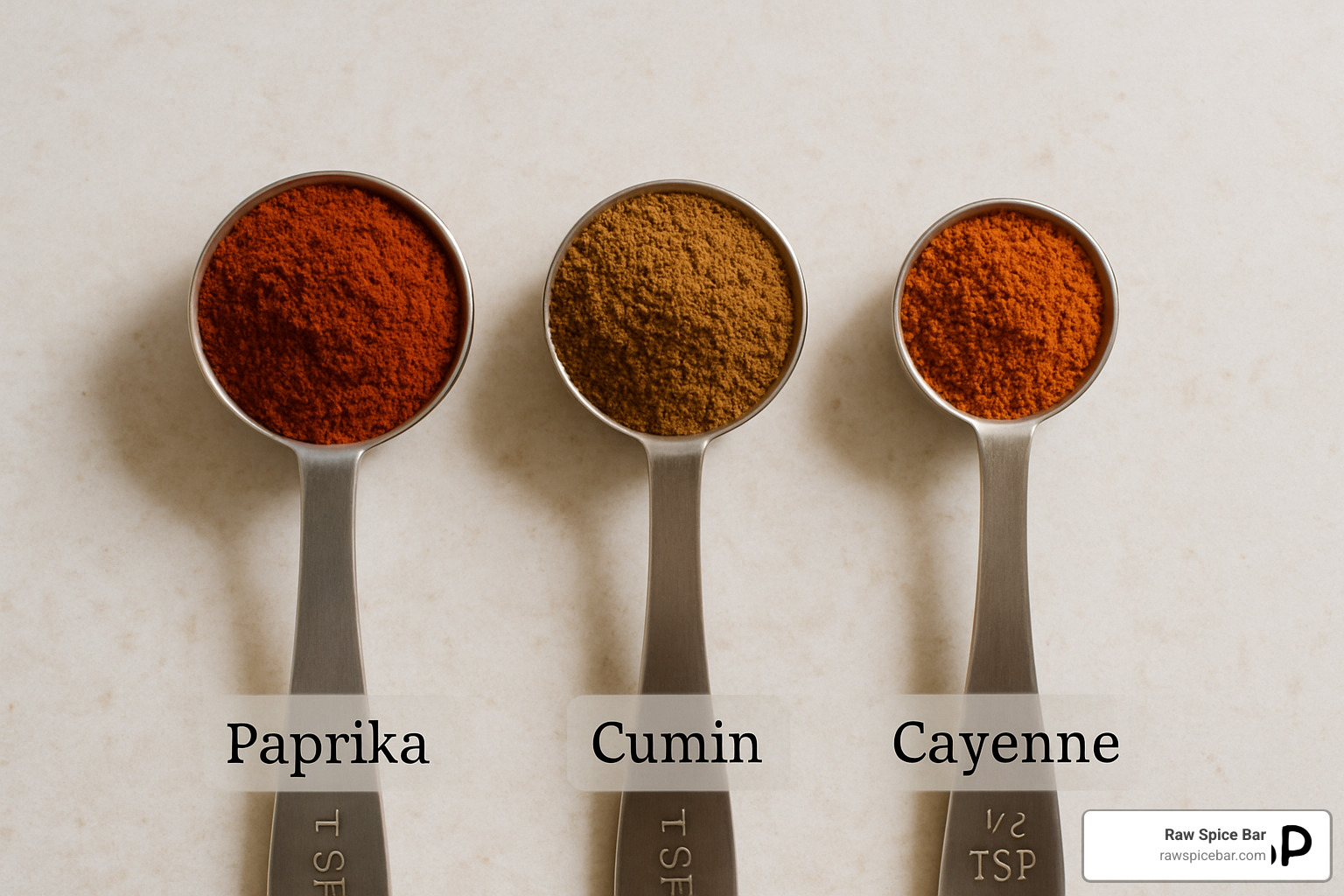
Let's be honest - running out of chili powder always happens at the worst possible moment. You're stirring your famous chili recipe when you shake that little jar and... nothing. But here's the thing: the best alternative for chili powder is probably sitting right in your spice cabinet.
The secret weapon? What spice experts call the 2-1-¼ rule. This simple formula uses two teaspoons paprika, one teaspoon cumin, and a quarter teaspoon cayenne pepper to create a substitute that's nearly identical to store-bought chili powder.
Why does this work so well? Because you're essentially reverse-engineering what manufacturers already do. Paprika forms the base with that gorgeous red color and mild pepper flavor. Cumin brings the earthy depth that makes chili powder taste like... well, chili powder. And cayenne adds just enough heat to wake up your taste buds without sending anyone running for milk.
This isn't just theory - we've tested this blend in everything from emergency weeknight tacos to competition-worthy chili. The results consistently fool even experienced cooks who can't tell the difference from the real thing.
Alternative for Chili Powder Using Paprika, Cumin & Cayenne
When you need results fast, this is your go-to formula. Mix two teaspoons paprika with one teaspoon ground cumin and quarter teaspoon cayenne pepper to create exactly one tablespoon of chili powder substitute.
The beauty of this blend lies in its versatility. We've watched home cooks use it successfully in beef chili, vegetarian taco filling, roasted sweet potatoes, and even barbecue dry rubs. The paprika gives you that signature red color that makes food look as good as it tastes, while the cumin provides that distinctive earthy backbone.
One pro tip: if you have both sweet and smoked paprika on hand, try using smoked paprika for an extra layer of complexity. It adds a subtle smokiness that can actually improve on basic store-bought chili powder.
Family-Friendly Alternative for Chili Powder (Mild)
Got kids who think black pepper is spicy? This gentler approach keeps all the flavor while ditching the heat completely. Start with sweet paprika as your base - two teaspoons will do it. Add one teaspoon ground cumin for that essential earthy note, then finish with just a pinch of dried oregano for herbal complexity.
The key here is completely skipping the cayenne. You might worry this will taste bland, but it won't. The cumin and paprika carry plenty of flavor on their own, and the oregano adds an unexpected depth that kids actually love.
This mild version has become our go-to recommendation for family taco nights. Parents get that familiar chili powder taste they're craving, while kids can actually enjoy their food without tears. And here's a parent hack: you can always pass around hot sauce for the adults who want more fire.
Smoky or Extra-Spicy Fix in Seconds
Ready to take things up a notch? These quick tweaks transform your basic substitute into something special. For serious smokiness, swap your regular paprika for smoked paprika or add half a teaspoon of chipotle powder to your basic blend. The difference is remarkable - suddenly your substitute tastes like it came from a high-end spice shop.
Want more heat instead? Double the cayenne to half a teaspoon or throw in a pinch of crushed red pepper flakes. This creates a substitute that's actually spicier than most commercial chili powders, perfect for those who like their food with some serious kick.
The smoky version works incredibly well in barbecue applications, while the extra-spicy blend shines in hearty winter chilis where you want that warming heat. For more ideas on chili powder substitutes, we've got you covered with even more creative solutions.
DIY Homemade Chili Powder Blend From Scratch

There's something deeply satisfying about making your own spice blends. When you create homemade chili powder, you're not just saving money - you're crafting an alternative for chili powder that's fresher, more flavorful, and completely customized to your taste preferences.
The biggest advantage? Your homemade blend will be silicon-free and preservative-free, containing only pure spices. While commercial versions can sit on shelves for years, your fresh blend will stay vibrant for 6 months when stored properly in an airtight container away from light and heat.
This classic recipe yields 4 tablespoons - enough chili powder for several cooking sessions. That's enough for multiple pots of chili, taco nights, or barbecue rubs without the worry of running out mid-recipe again.

Classic 6-Spice Formula
This time-tested combination captures everything you love about store-bought chili powder while giving you complete control over each flavor element. The paprika forms the base with its sweet pepper flavor and signature red color, while cumin provides that essential earthy backbone. Garlic and onion powders add savory depth, oregano brings herbaceous brightness, and cayenne delivers just the right amount of heat.
Start with 2 tablespoons paprika, ½ tablespoon ground cumin, ½ tablespoon garlic powder, 1 teaspoon onion powder, 1 teaspoon dried oregano, and ¾ teaspoon cayenne pepper. Simply whisk everything together thoroughly in a bowl until well combined, then transfer to an airtight jar.
The beauty of making your own blend is the flexibility. If your family loves garlic, double the garlic powder. Want it earthier? Add extra cumin. Prefer it milder? Cut the cayenne in half. You're the chef, so make it yours.
Smoky Chipotle Variation
For those who crave deeper, more complex flavors, this smoky version transforms the classic formula into something truly special. Replace 1 tablespoon of regular paprika with smoked paprika and add 1 teaspoon chipotle powder. Since chipotle brings its own heat, reduce the cayenne to ½ teaspoon to keep the balance just right.
This variation works magic on barbecue rubs and grilled meats. The smoky notes add layers of flavor that make people ask, "What's your secret ingredient?" The answer is simply better spice blending.
Herbal & Salt-Free Version
Many commercial chili powders contain hidden sodium, but this version keeps things clean and diet-friendly. The secret ingredient here is ground coriander, which adds a lovely citrusy brightness that lifts the entire blend.
Use the same base of 2 tablespoons paprika and ½ tablespoon ground cumin, but swap in ½ tablespoon ground coriander for extra complexity. Keep the 1 teaspoon each of garlic powder and oregano, and finish with ½ teaspoon cayenne. If you need a coriander substitute, fennel or caraway seeds work well, though they'll change the flavor profile slightly.
This no-sodium version is particularly wonderful in Mediterranean-inspired dishes where you want warm spice without overwhelming saltiness. It's proof that healthy cooking doesn't mean sacrificing flavor.
Advanced Swaps: Single Chile Powders, Seasoning Blends & Liquids
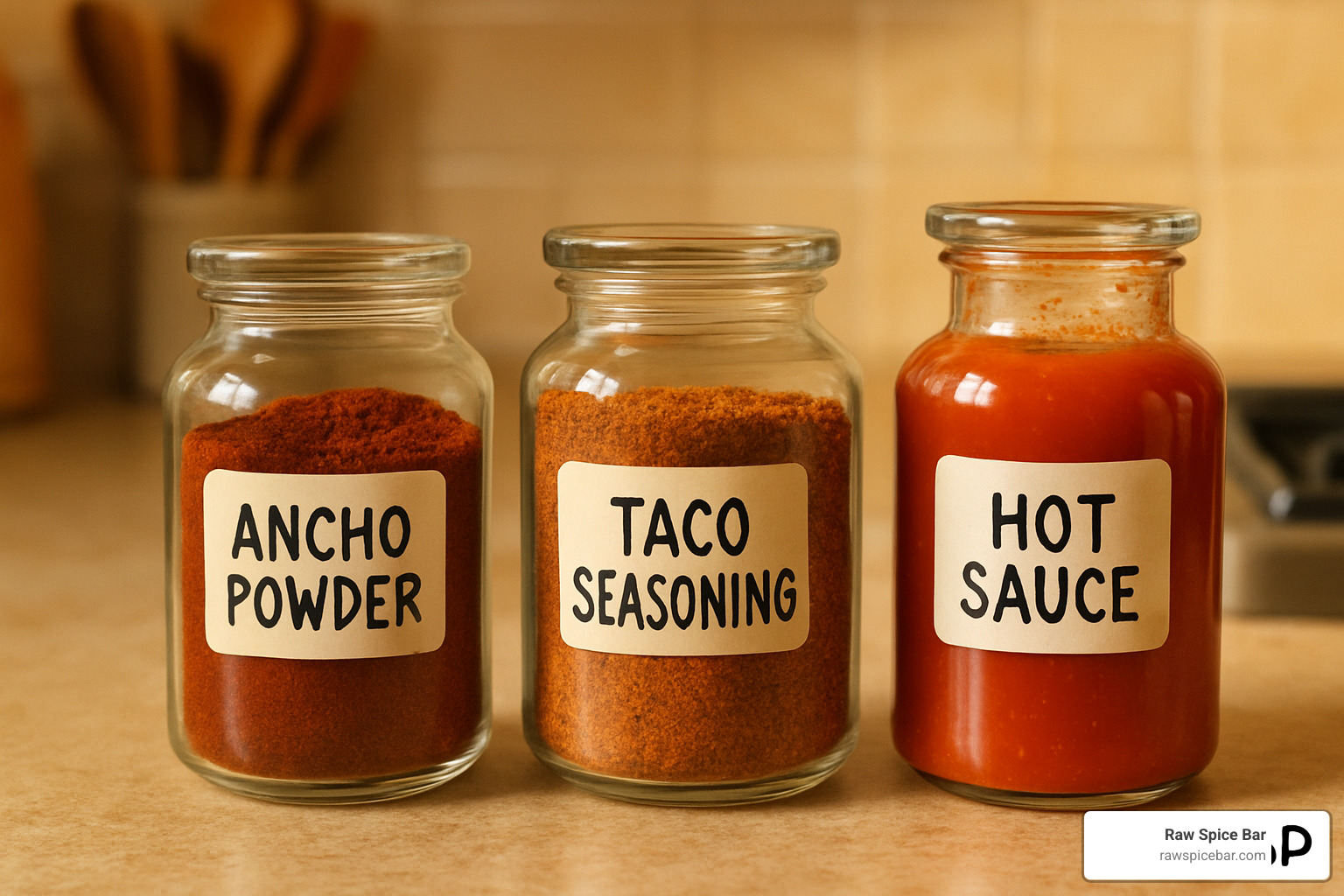
When you've moved beyond basic pantry spices, these more adventurous swaps can actually lift your cooking. They require a bit more finesse with measurements, but the flavor payoff can be incredible. Think of these as your alternative for chili powder with personality.
The science behind why these work is fascinating. Research shows that capsaicin, the compound that makes peppers hot, actually improves other flavors in your dish. This is why even unconventional substitutes can work beautifully when you understand their strengths.
Single Chile Powders: Flavor & Heat Guide
Ancho powder is like the gentle giant of chile powders. With its sweet, fruity notes and mild heat of 1,000-1,500 SHU, it matches chili powder's heat level perfectly. Use only ½ teaspoon per tablespoon of chili powder called for. I've found ancho particularly magical in mole-style dishes and enchilada sauces where that fruity sweetness really shines.
Chipotle powder brings the drama with its smoky intensity. At 2,500-8,000 SHU, it's hotter than regular chili powder, so stick to ½ teaspoon per tablespoon. For a more balanced substitute, try blending it with 1½ teaspoons paprika and 1 teaspoon cumin. The smokiness can transform an ordinary chili into something that tastes like it simmered over a campfire.
Cayenne powder is pure heat with little complexity - think of it as replacing a symphony with a single trumpet blast. At 30,000-50,000 SHU, use only ¼ teaspoon per tablespoon of chili powder needed. Always pair it with paprika and cumin to build back that missing flavor complexity.
New Mexico chile offers the most authentic Southwestern flavor. With its mild 500-1,250 SHU heat range and sweet, fruity notes, you can actually use it in equal amounts as chili powder. It's particularly wonderful when you want that genuine chile pepper taste without the blend approach.
Using Taco, Cajun, or Creole Seasoning
These pre-made blends are like cooking with a safety net - they'll work, but you need to adjust for their quirks. Taco seasoning works at a 1:1 ratio, but here's the catch: reduce your added salt by half. Most taco seasonings pack way more sodium than chili powder blends, and nobody wants a salt bomb.
Cajun or Creole seasoning brings Louisiana flair to any dish, though it might not be authentic to your recipe. Use about ¾ the amount called for since these blends tend to be more potent in both heat and salt. The result will taste more like New Orleans than New Mexico, but that's not necessarily a bad thing.
Watch out for ingredient overlap. If your recipe already calls for cumin, garlic, or onion powder, dial back those individual spices when using seasoning blends. Otherwise, you'll get an overwhelming dose of one flavor that throws everything off balance.
Liquid Fire: Hot Sauce & Adobo
Liquid substitutes require the most kitchen creativity, but they can save the day when you're truly stuck. Hot sauce works at about 2 dashes per teaspoon of chili powder needed. The vinegar factor means you'll want to add a pinch of sugar to balance that acidity. You might also need to reduce other liquids in your recipe slightly.
Adobo sauce from canned chipotle peppers is liquid gold for adding heat and smokiness. Use 1 teaspoon per tablespoon of chili powder, but reduce both salt and other liquids in your recipe. The thick, rich sauce brings incredible depth of flavor that can actually improve some dishes.
The key with any liquid substitute is managing the extra moisture and acidity they introduce. Your dish might end up slightly saucier than intended, but the flavor trade-off is often worth it.
Heat, Flavor & Nutrition Tweaks When Substituting
When you're reaching for an alternative for chili powder, understanding how each swap affects your dish makes the difference between "meh" and "wow." The heat level changes are the most dramatic - while standard chili powder sits comfortably at 1,000-1,500 Scoville Heat Units, cayenne pepper can blast you with 30,000-50,000 SHU. That's like comparing a gentle campfire to a blowtorch.
The flavor shifts are equally important. Paprika alone gives you color but misses the earthy depth that makes chili powder so satisfying. Chipotle powder at 2,500-8,000 SHU adds smokiness that transforms your dish into something completely different - sometimes wonderfully so. Ancho powder matches chili powder's heat range but brings fruity sweetness that works beautifully in Mexican-inspired dishes.
From a nutrition standpoint, the differences are minimal. Most spices hover around 14-23 calories per tablespoon, so you're not dramatically changing your dish's nutritional profile. However, some substitutes offer bonus benefits - paprika provides vitamin C and antioxidants, while cayenne contains capsaicin that may give your metabolism a little boost according to scientific research on capsaicin benefits.
Storage matters more than you might think. Homemade blends stay fresh for 6 months in airtight jars kept in cool, dark places. Commercial chili powder often lasts longer due to anti-caking agents, but loses potency over time just like your homemade versions.
Avoiding Common Mistakes
Over-spicing happens faster than you think. Start with half the amount you think you need, especially with cayenne or chipotle powder. As one home cook learned the hard way: "I dumped in a full teaspoon of cayenne thinking it would match chili powder - my family still talks about that inedible chili three years later."
Skipping cumin is the biggest flavor mistake people make. Many cooks try using just paprika and cayenne, then wonder why their dish tastes flat. Cumin provides that essential earthy backbone that makes chili powder so distinctive. Without it, you're missing a crucial piece of the flavor puzzle.
Ignoring salt content in pre-made seasoning blends can ruin an otherwise perfect dish. Taco seasoning, Cajun blends, and Creole seasonings often contain significantly more sodium than pure chili powder. Always taste as you go and adjust your salt accordingly.
Adjusting Other Seasonings
When using substitutes, your recipe's other ingredients need attention too. If you're using taco seasoning that already contains garlic powder, reduce or eliminate additional garlic in your recipe to avoid overwhelming garlicky flavors.
Ramp up oregano when using milder substitutes like paprika alone. The herb helps bridge the flavor gap and adds complexity that single-spice substitutes can't provide on their own.
Counter unexpected sweetness from substitutes like ancho powder with a pinch of acid. A squeeze of lime juice or splash of vinegar can balance things beautifully when your substitute brings more sweetness than you bargained for.
The key is understanding that each substitute brings its own personality to the dish. Sometimes that personality shift creates something even better than the original recipe - which is how great cooking findies happen.
Frequently Asked Questions about Chili Powder Alternatives
What's the difference between chili powder and chile powder?
This confusion trips up even experienced cooks! Chili powder (with an "i") is that familiar spice blend sitting in your cabinet - it's mostly paprika mixed with cumin, garlic powder, onion powder, and oregano. Chile powder is completely different - it's pure ground dried peppers from a single variety, no other ingredients added.
Why does this matter for finding an alternative for chili powder? The heat levels are wildly different. Your standard chili powder blend registers around 1,000-1,500 Scoville units, while pure chile powders can range from mild (like ancho at 1,000 units) to blazing hot (like cayenne at 30,000+ units).
When substituting, chile powders pack more punch and need smaller quantities. If a recipe calls for a tablespoon of chili powder, you'd only use about half a teaspoon of most chile powders.
Can I use only cayenne as an alternative for chili powder?
Here's where many home cooks go wrong - cayenne alone won't give you the same results. Think of it like trying to replace a whole jazz band with just the trumpet player. You'll definitely hear something loud, but you're missing all the harmony!
Cayenne brings serious heat (30,000-50,000 Scoville units) but zero complexity. Chili powder gets its signature flavor from that blend of paprika, cumin, and aromatics. If cayenne is all you have, use only ¼ teaspoon maximum per tablespoon of chili powder called for in your recipe.
The better approach? Mix that cayenne with paprika and cumin if you have them. Even a simple combination of 2 teaspoons paprika plus ¼ teaspoon cayenne will get you much closer to authentic chili powder flavor than cayenne flying solo.
How do I convert hot sauce into a dry-spice measurement?
This is definitely emergency territory, but it can work in the right circumstances. Hot sauce contains vinegar, salt, and sometimes sugar - ingredients that will change both the flavor and liquid balance of your dish.
Start with 2 dashes per teaspoon of chili powder your recipe calls for. The acidity from the vinegar can make your dish taste sharp, so balance it with a tiny pinch of sugar. You'll also need to reduce other liquids in your recipe slightly to account for the extra moisture.
This substitution works best in slow-cooked dishes like chili or stews where the extra liquid can cook down and integrate properly. Don't try this in dry rubs or dishes where you need that powdery texture - you'll end up with a soggy mess instead of the flavor boost you're after.
Conclusion & Spice Up Your Pantry
You've now got everything you need to handle that empty chili powder jar with confidence. The trusty 2-1-¼ paprika-cumin-cayenne blend will get you through most cooking emergencies, while single chile powders like ancho or chipotle can actually lift your dishes beyond what regular chili powder offers.
The real secret isn't just knowing what to substitute - it's understanding why chili powder works in the first place. That perfect balance of mild pepper base, earthy cumin, aromatic herbs, and gentle heat creates complexity without overwhelming your taste buds. Once you grasp this formula, you can recreate it using ingredients you probably already have sitting in your pantry.
Making your own blends opens up a whole world of flavor possibilities. You control the heat level, the smokiness, and even the salt content. Plus, there's something satisfying about creating exactly what your family's taste buds crave.
If you find yourself enjoying the process of experimenting with spice blends, consider exploring globally-inspired options that can serve similar functions to chili powder. Raw Spice Bar's monthly spice subscription introduces home cooks to internationally-inspired blends that often work beautifully in place of traditional chili powder, adding exciting new dimensions to familiar recipes.
Storage matters more than most people realize. Keep your homemade blends in airtight containers away from light and heat, and they'll stay fresh for up to 6 months. Label them with preparation dates - trust me, fresh spices make a noticeable difference in your cooking.
Cooking should be fun, not stressful. Start with smaller amounts than you think you need, taste as you go, and adjust to match your preferences. The best alternative for chili powder is simply the one that makes your dish taste exactly how you want it to.
Your dinner is saved, your family is happy, and you've learned something new along the way. That's what good cooking is all about.


